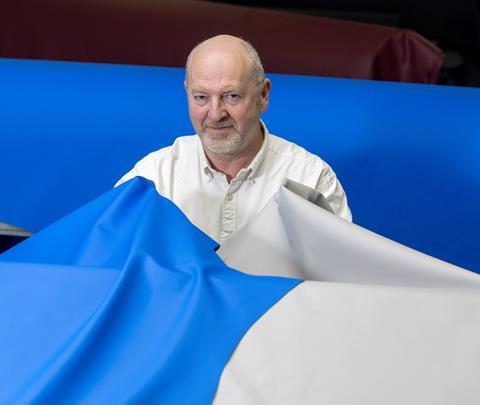Muirhead is reinforcing its claim to be the industry’s most environmental leather supplier with the launch at AIX of a range it says goes a long way towards eliminating damaging oil-based elements, chrome, glutaraldehyde, and heavy metals from its tanning process.

The aviation and transport brand – part of the Scottish Leather Group – has replaced its existing tanning chemistry with compostable technology. The new range, FreeTAN, also has a non-toxic, halogen-free fire-retardant treatment, says the Bridge of Weir-based company.
Dr Warren Bowden, head of innovation and sustainability, maintains that Muirhead leathers are already the lowest-carbon lines on the market, largely because they are biodegradable, and due to the strides the company makes to re-use the 90% of the original rawhide that does not go into the finished product. “We make our products in a circular way and have spent 20 years looking at how we can find other uses for the source material,” he says.
This sort of detail is vital when so many airlines are looking at every aspect of their operation and cabin to reduce their carbon footprint, he adds.
Muirhead is also at AIX showing a new range of “neurodiverse-friendly” aircraft seat covers, called Sensation. While not a product for market, the collection is designed, it says, to “inspire CMF [colour, material, and finish] designers” to think more about creating more inclusive products for neurodivergent adults, living with often “non-visible” conditions such as autism, learning impairments, or ADHD.
“Air travel can be overwhelming for anyone, but especially for neurodivergent individuals who tend to have heightened sensitivities,” says designer Jamie O’Donnell. “Seat covers play a vital role in providing them with comfort and a sense of security, enabling them to better regulate their emotions onboard.”
The company says the collection features a “soothing monochromatic palette of greens, blues, and neutrals to evoke a calming atmosphere”. It also demonstrates how signage and patterns on leather seat covers could help passengers locate their seats and process their environment.
Scottish Leather Group traces its origins to 1840. One hundred years later its first aviation leathers flew on the Boeing 307 Stratoliner and were also used on British Airways Concordes.
“We are an old company, but we like to think we do things in a very contemporary way, including in the way we deal with people,” says O’Donnell.


























